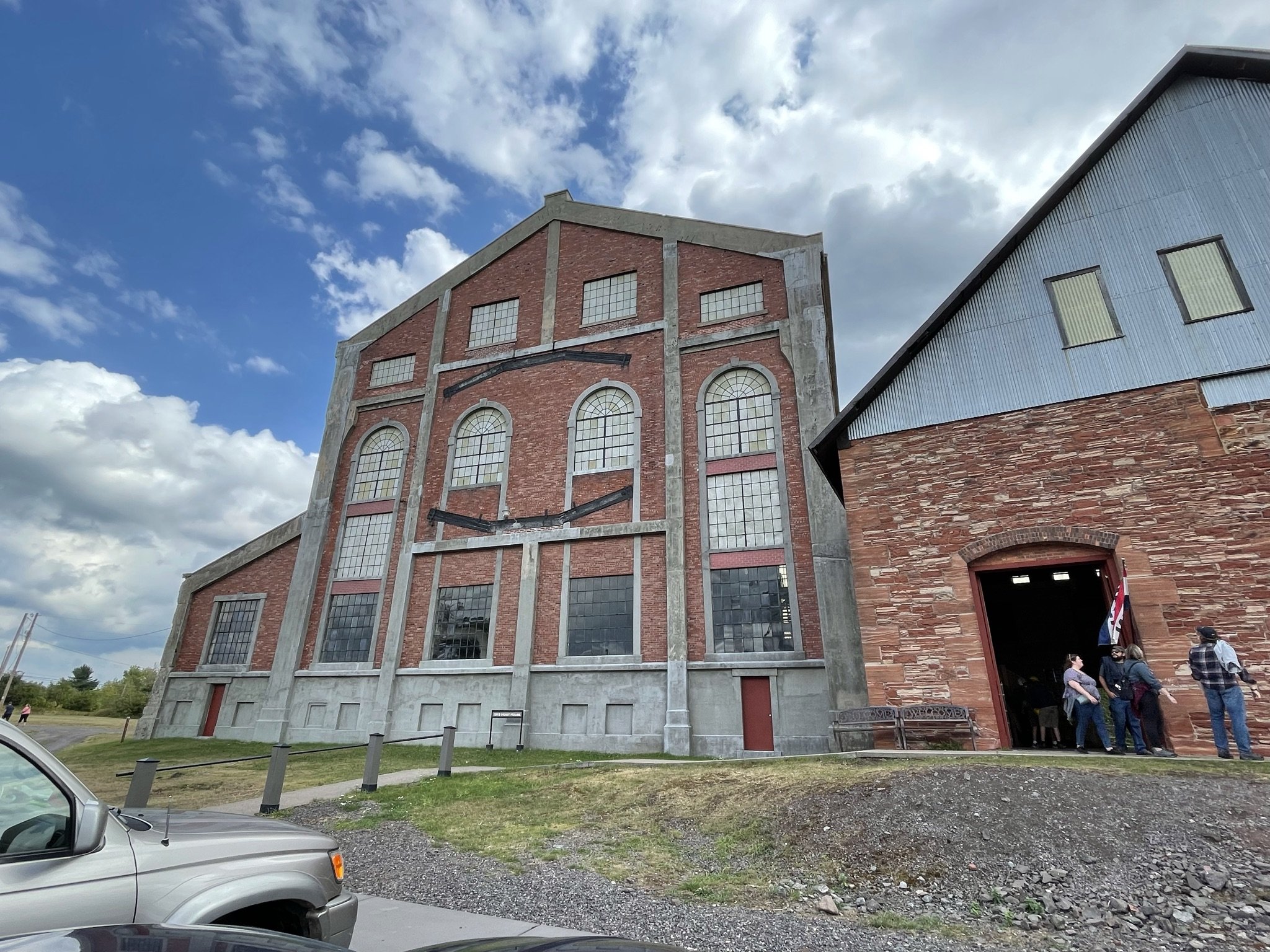Quincy Mine
Our last day at Keweenaw Castle was rainy, so it seemed a good day for a mine tour. And as we left the Keweenaw Peninsula, there just happened to be a famous copper mine on our route. We expected the tour to be interesting, but it turned out to be truly mine-boggling (Steve's joke - groan!).
Quincy Mine, near Hancock, Michigan, was the most successful of the mines founded during the 1840's Copper Rush, operating from 1846 to 1945. The No. 2 Shaft House resembled others we had seen here in Copper Country. But below this structure was the world's longest mine shaft, extending 9,260 feet at a 55 degree angle (to save you the trigonometry, that's 6,200 feet below the surface). WOW!
Nearby was the No. 2 Hoist House, constructed of reinforced concrete in 1912 - quite an impressive feat at the time. Our hard hats kept us safe from falling chunks of concrete. And inside the Hoist House was the world's largest steam-powered mining hoist.
The mining hoist used large cables to pull skipcars full of copper ore out of the mine shaft. It also transported miners in and out of the mine. The hoist operators sat on top of the tall platform, and the hands on the large dials guided them as they moved the cars between the 92 levels of the mine. It was like a ginormous elevator, with cars moving up and down at a 55-degree angle, at 36 miles per hour, 10 tons at a time. Double WOW!
After leaving the Hoist House, we boarded a cogwheel tram for a short ride down the hill to the mine entrance.
As we left the tram, we were met by a blast of cold from the mine entrance, and were grateful we had brought our fleeces. An area power outage didn't faze our tour guide - he handed out a few flashlights, the rest of us turned on our phone flashlights, and we all walked on bravely into the pitch-dark mine.
This mine entrance was really the East Adit, which was opened in 1895 to help drain water out of the mine. The tunnel was widened by Michigan Tech in the 1970's, as an underground laboratory for their Drilling & Blasting course. (Doesn't that sound cool? Unfortunately this "lab" is no longer in use by Michigan Tech.) We were on the 7th level (of 92 levels), where the air temperature was about 45º year-round. We walked 2,000 feet into the mountain, and were about 350 feet below the surface.
With no electric lighting, it was easier to imagine being a mid-19th century miner with a single lit candle on his helmet, climbing deep into the mine with his sledgehammer to work 10-hour shift. It was harder to imagine the strength and stamina needed to work in the mine. The Quincy Mine paid its workers well, by the standards of the time. Drillers and blasters could earn enough in one day to pay rent for a month. The downside was the lung disease (silicosis) caused by years of inhaling rock dust.
Our guide showed us the 800-pound copper nugget found by Michigan Tech students, and told us that many years earlier, a 20-ton boulder of nearly pure copper had been found in the mine. Without modern technology, it proved too difficult and unprofitable to cut the boulder into pieces small enough for transport, and the boulder was abandoned. Mine-boggling.
As we walked back out of the mine, we gained a new appreciation for the meaning of the proverbial phrase, "seeing the light at the end of the tunnel." We tried to imagine miners emerging from the deepest levels of the mine, where the temperature was well over 100º, and then exiting the mine into the sub-zero Michigan winter. It's no wonder saunas became so popular in the UP.
It was nice to be above ground again, in the summer sunshine. We were glad for the chance to visit Keweenaw's interesting past in such a fascinating way.







